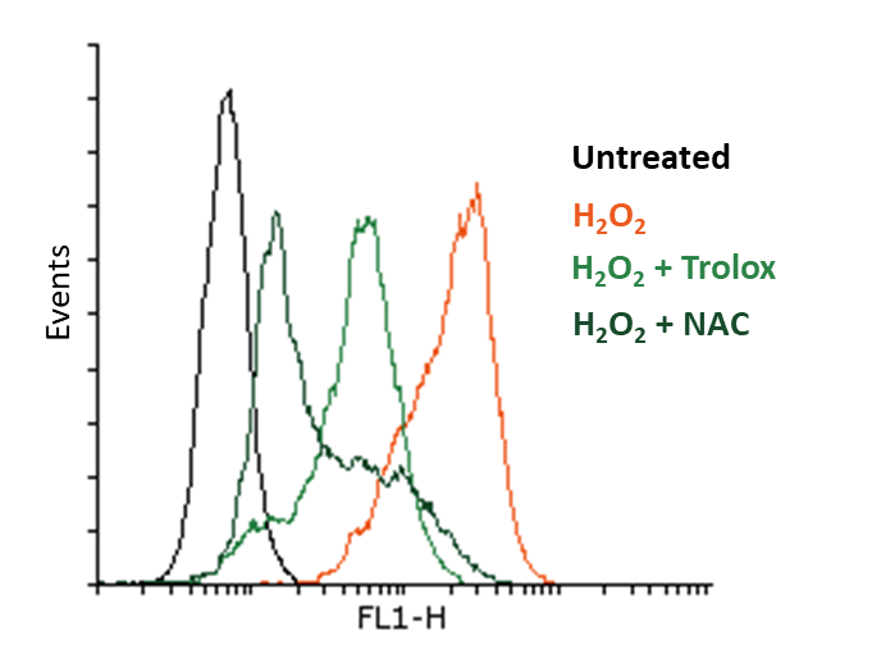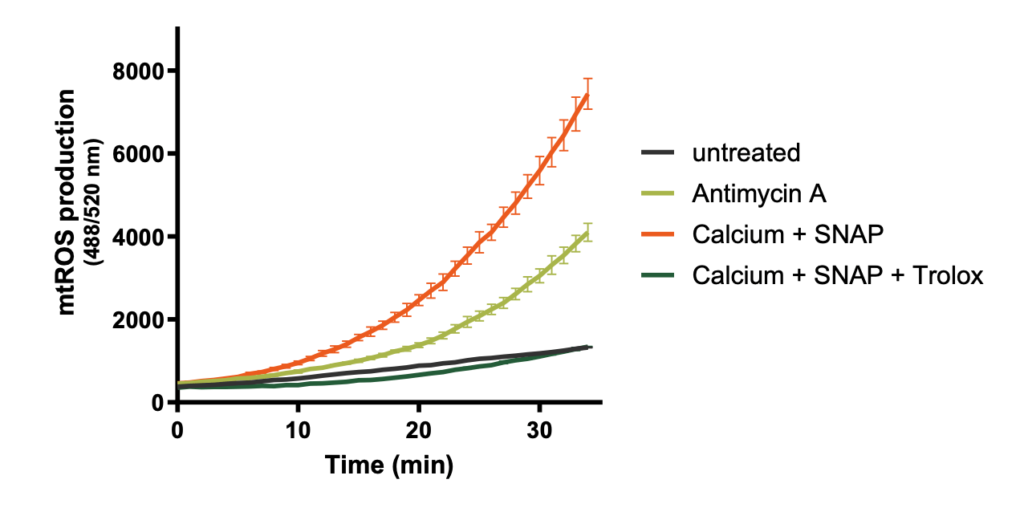Circumvent oxidative stress and reenforce antioxidant defence mechanisms
Mitochondrial generation of oxidative stress and its cellular consequences plays a major part in the pathogenesis of many chronic diseases and in premature ageing. Mitochondrial oxidative stress can be a good target in the search for novel and efficient therapies for patients with cardiovascular, neurodegenerative, metabolic diseases and cancer.
The MitoXpert® and MitoPathway® technological platforms developed by Mitologics provide robust custom-designed assays that measure mitochondrial oxidative stress and its defence system.
Mitochondria are major sources of reactive oxygen species (ROS) within the cell, as they are generated once electrons escape through the electron carriers of the respiratory chain – complexes I, III and IV – when mitochondrial OxPHOS activity becomes altered.
As a vestigial organelle, the mitochondrion itself is very vulnerable to oxidative damage. Exposure to ROS induces lipid peroxidation, protein oxidation, and mitochondrial DNA (mtDNA) damage, creating a feedback loop that further aggravates mitochondrial dysfunction.
Highlight the antioxidant properties of actives in human normal cells.
Detection of ROS production in rat heart myoblast H9C2 cells treated by hydrogen peroxide (H2O2). The level of ROS detected by spectrofluorimetry after H2DCFDA labeling is reduced in presence of Trolox (vitamin A-derivative) and N-acetylcysteine (NAC).
Measure direct protective effect of compound on mitochondria subjected to oxidative stress.
Induction of oxidative stress on isolated mouse liver mitochondria by the nitric oxide donor S-nitroso-N-acetylpenicillamine (SNAP). The mtROS production detected by spectrofluorimetry after H2DCFDA labeling is inhibited by Trolox (vitamin A-derivative).
Our MitoXpert® and MitoPathway® platforms provide consolidated data to help you to:
- Evaluate how compounds affect critical mitochondrial ROS production. Through multiple assays monitoring both ROS production and the antioxidant defence system, you will get a complete picture of the oxidative stress status of mitochondria and cells,
- Measure direct protective effects on mitochondria subjected to oxidative stress. Tests involve well-characterised mitochondria isolated from rodent organs – liver, heart, muscle, brain, adipose tissue, etc. – as well as cancerous and healthy human cell lines,
- Detect compounds displaying protective properties in a pathological context. With cellular models of oxidative and metabolic stress, ischaemia-reperfusion injury linked to oxygen and/or glucose deprivation, patient-derived cells, for example cells from patients with genetic mitochondrial diseases, a wide range of tests is possible,
- Highlight the antioxidant properties of actives in normal human cells – skin fibroblasts, keratinocytes, etc. – to back up anti-ageing claims.



